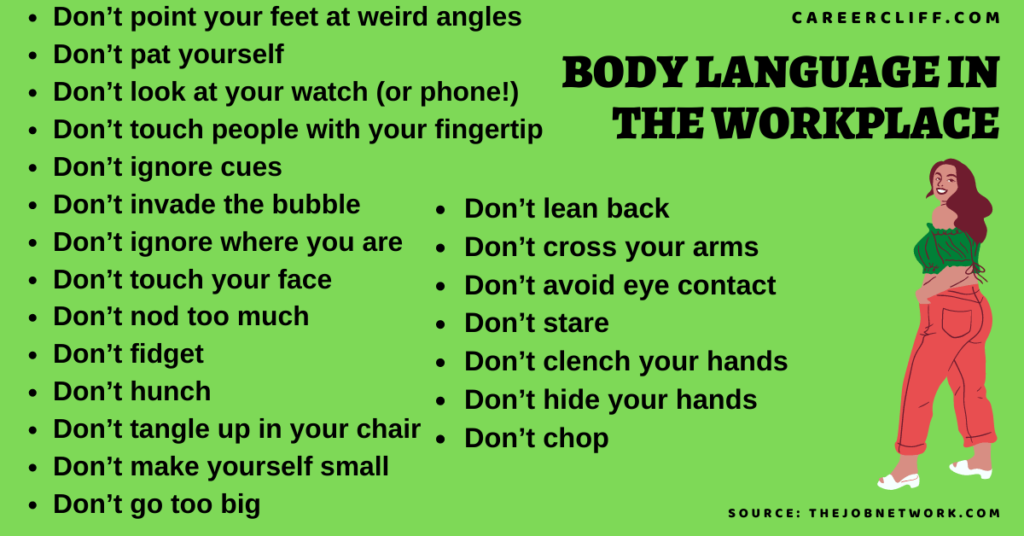Introduction
Nonverbal communication plays a crucial role in healthcare settings. From a patient’s facial expressions to the tone of their voice, healthcare professionals must pay close attention to nonverbal cues to understand their patients’ needs and emotions. However, bad body language can lead to miscommunication and negatively impact patient care. That’s why it’s essential for healthcare professionals to master the art of nonverbal communication, including detecting and addressing bad body language. In this article, we will explore tips and tricks for recognizing and resolving negative nonverbal cues in healthcare settings, helping healthcare professionals to provide the best possible care for their patients.
ALSO, READ
- How to Read Body Languages in healthcare settings – Revealing the Secrets Behind Common Nonverbal Cues in healthcare
- How to delete friends on Snapchat
What is Bad body language in healthcare?
Bad body language in healthcare refers to nonverbal cues that can negatively impact the patient-provider relationship and communication between healthcare professionals and patients. It can include a range of nonverbal cues such as crossing arms, avoiding eye contact, displaying tense or closed body posture, frowning or scowling, or appearing impatient or dismissive.
Bad body language in healthcare can make patients feel uncomfortable or unwelcome, leading to a breakdown in communication and decreased trust in healthcare professionals. This can ultimately impact the patient’s willingness to engage in their healthcare plan and follow medical advice, which can have negative consequences for their health outcomes.
Examples of bad body language in healthcare can also include interruptions, speaking in a condescending tone, or displaying signs of impatience. These behaviors can make patients feel undervalued or disrespected, leading to further disengagement and reluctance to share important information about their health.
It is important for healthcare professionals to be aware of their nonverbal cues and actively work to promote positive body language in their interactions with patients. This includes adopting a relaxed and open posture, making eye contact, and using a warm and empathetic tone of voice. By promoting positive body language, healthcare professionals can build stronger relationships with their patients and promote better health outcomes.
Examples of Bad Body Language in Healthcare

Avoiding Eye Contact
Eye contact is a powerful tool for establishing trust and showing interest in what someone is saying. In healthcare, avoiding eye contact can signal disinterest, disrespect, or dishonesty. When a healthcare professional avoids eye contact, it can cause the patient to feel dismissed, frustrated, or even suspicious.
Crossed Arms
Crossed arms are often seen as a defensive or closed body posture, indicating that the person is not open to hearing what is being said. In healthcare, this can be especially problematic, as patients need to feel heard, understood, and supported. If a healthcare professional is seen as unapproachable, patients may be less likely to ask questions, share important information, or follow treatment recommendations.
Slouching or Leaning Away
Slouching or leaning away from a patient can signal disinterest, boredom, or disrespect. This body language can create a physical barrier between the healthcare professional and the patient, making it difficult to establish a connection or build trust. Patients may also feel like the healthcare professional is not taking their concerns seriously, which can further strain the relationship.
Fidgeting or Nervous Ticks
Fidgeting or nervous ticks, such as tapping feet or playing with a pen, can be distracting and create the impression that the healthcare professional is impatient, anxious, or uninterested. This type of body language can make patients feel uncomfortable or intimidated, affecting the quality of care provided.
Ways to Detect Bad Body Language in Healthcare
Observe Nonverbal Cues
Pay attention to the way the healthcare professional is standing or sitting, the expressions on their face, and the gestures they make. Observe how the patient reacts to the healthcare professional’s body language, such as whether they seem relaxed, engaged, or defensive.
Ask for Feedback
Ask patients for feedback on their interactions with healthcare professionals. This can provide valuable insight into how the patient perceives the healthcare professional’s body language and help to identify any areas that need improvement.
Use Video Conferencing
In a virtual setting, it is still possible to observe body language. When using video conferencing, pay attention to the way the healthcare professional is positioned on camera, their facial expressions, and the gestures they make.
Ways to Address Bad Body Language in Healthcare
Practice Good Posture
Good posture can make a big difference in how a healthcare professional is perceived. Stand or sit up straight, maintain good eye contact, and avoid crossing your arms or legs. This will help to create a positive, open, and approachable demeanor.
Use Positive Facial Expressions
Facial expressions can convey a lot about a person’s emotions, attitude, and level of engagement. Practice using positive facial expressions, such as smiling, nodding, and showing interest. This will help to create a more inviting and supportive environment for patients.
Monitor and Adjust Body Language
Be mindful of your own body language, and make an effort to adjust it if necessary. If you notice that you are slouching or fidgeting, take a deep breath and try to relax. If you catch yourself crossing your arms or avoiding eye contact, make a conscious effort to change your posture and maintain good eye contact. Monitoring and adjusting your body language can help you to present yourself in a positive and professional manner.
Seek Feedback and Training
Seek feedback from colleagues, supervisors, or patients on your body language and communication skills. Consider seeking additional training or coaching to improve your nonverbal communication and enhance your ability to connect with patients and colleagues.
Be Mindful of Cultural Differences
Body language can vary greatly across cultures, and it is important to be aware of these differences. When communicating with patients from diverse backgrounds, make an effort to understand their cultural norms and adjust your body language accordingly. This can help to create a more inclusive and welcoming environment for all patients.
Use appropriate gestures
Use gestures to reinforce your verbal communication and provide clarity, but be careful not to overdo it. Avoid gestures that could be misinterpreted or offensive.
Practice active listening
Active listening is a critical skill for healthcare professionals who want to establish strong relationships with their patients. It involves not only hearing what a patient is saying, but also paying attention to their nonverbal cues and responding in a way that shows empathy and understanding.
Active listening starts with creating an environment where the patient feels comfortable and heard. This can involve maintaining eye contact, nodding in agreement, and using open-ended questions to encourage the patient to share their thoughts and feelings.
Healthcare professionals should also be aware of their own nonverbal cues when listening to patients. Adopting a relaxed, open posture and avoiding distractions like phone or computer screens can show patients that their concerns are being taken seriously.
In addition, healthcare professionals should actively listen for both verbal and nonverbal cues. This can include paying attention to the tone of voice, facial expressions, and body language that patients use to communicate their emotions and concerns.
Active listening is an ongoing process that requires practice and patience. Healthcare professionals should strive to create an environment where patients feel comfortable sharing their thoughts and feelings, and where nonverbal cues are taken seriously and responded to with empathy and understanding.
By practicing active listening, healthcare professionals can build stronger relationships with their patients and provide more effective care.
Use mirroring and other active listening techniques to show that you are engaged and interested in the conversation. This can help to establish trust and build rapport.
Be aware of your proximity
Be mindful of the distance between you and the person you are speaking with. Standing too close can be intimidating, while standing too far away can create a sense of disconnection.
Avoid distracting behaviors
Avoid fidgeting, tapping your feet, or engaging in other distracting behaviors that could convey disinterest or impatience.
Overall, improving your body language takes practice and self-awareness. By paying attention to your nonverbal cues and making conscious efforts to improve them, you can become a more effective communicator and build stronger relationships with those around you.
Reading body language can give you important clues about whether someone likes you. Here are some common signs to look for:
Eye contact: If someone likes you, they may make prolonged eye contact with you or glance at you frequently.
Smiling: A genuine smile can be a sign that someone is interested in you. If the smile is accompanied by raised eyebrows or crinkles at the corners of the eyes, it may be even more genuine.
Leaning in: If someone likes you, they may lean in towards you when you’re speaking or try to get closer to you physically.
Mirroring: If someone likes you, they may unconsciously mirror your body language, such as crossing their legs when you do or leaning back when you do.
Touching: If someone likes you, they may find excuses to touch you, such as lightly touching your arm or shoulder.
Dilated pupils: When someone is interested in you, their pupils may dilate, which can make their eyes appear larger and more expressive.
Open body language: If someone likes you, they may have open body language, such as uncrossed arms or facing towards you directly.
It’s important to note that these signs alone may not be enough to indicate someone’s true feelings towards you. It’s important to look at body language in context and consider other factors, such as verbal communication and the overall situation. Additionally, everyone expresses themselves differently, so it’s important not to make assumptions based solely on body language cues.
Improving your body language in communication can be a powerful way to enhance your interpersonal skills and improve your relationships with others.
Conclusion
Body language is an important aspect of communication in healthcare, and it can have a significant impact on the quality of care provided. By recognizing and addressing common examples of bad body language, healthcare professionals can improve their ability to connect with patients and colleagues and provide more effective care. By monitoring and adjusting their body language, seeking feedback and training, and being mindful of cultural differences, healthcare professionals can enhance their communication skills and create a more positive and supportive environment for patients.
